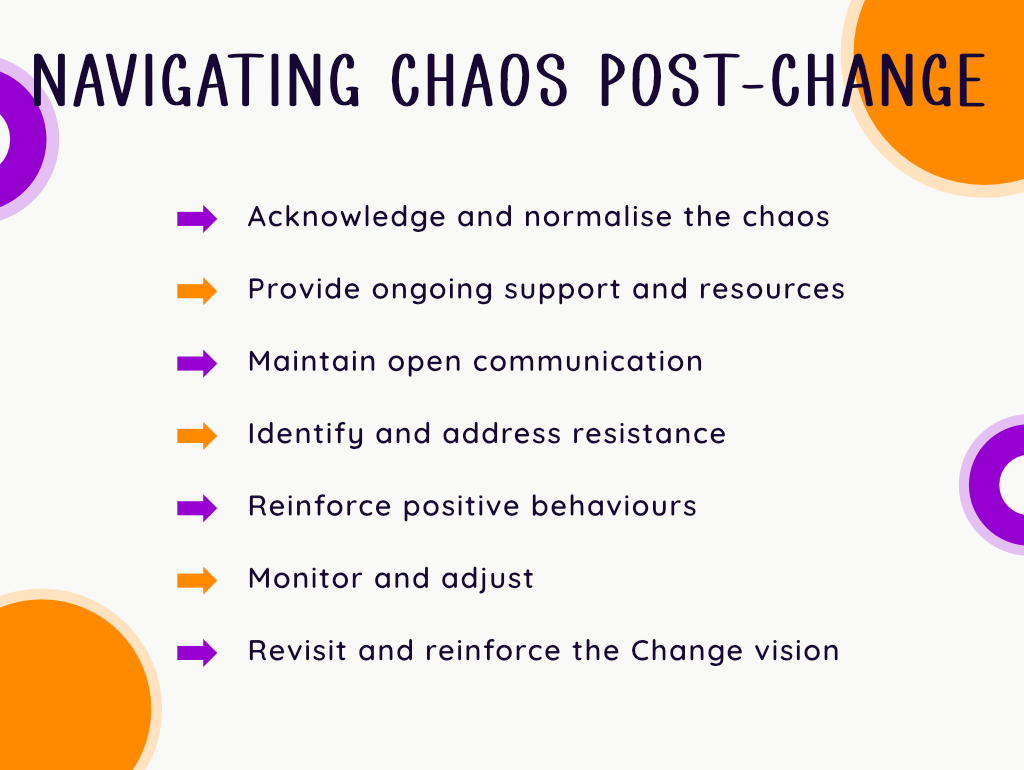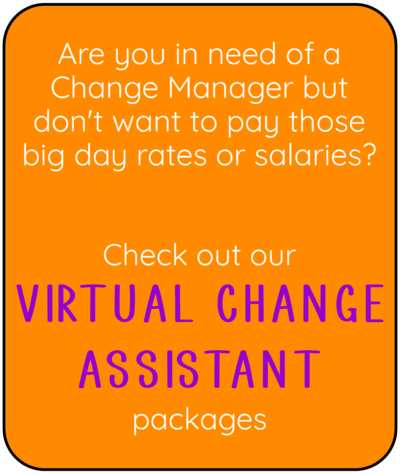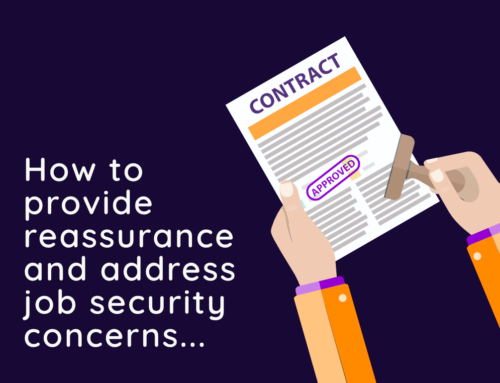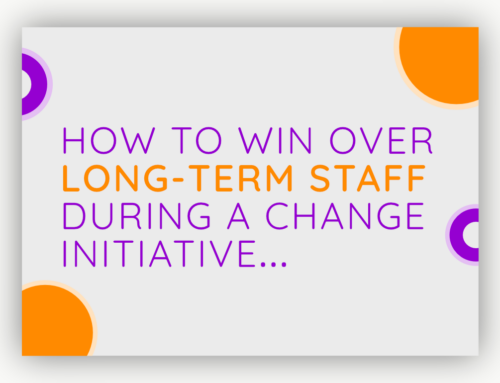
The successful implementation of a change initiative is often celebrated as a significant achievement. However, the period immediately following a major change can be one of the most challenging times for an organisation. Even after a well-planned and executed transformation, chaos can ensue. Employees might struggle with new systems or processes, productivity may dip, and confusion can arise as people adjust to their new roles and responsibilities. Navigating this post-change chaos is crucial for ensuring the long-term success of the change and preventing a backslide into old habits.
This article explores strategies to navigate the turbulence that often follows change, helping organisations restore stability, build momentum, and sustain the benefits of their transformation.
Understanding Post-Change Chaos – Post-change chaos refers to the disruption and instability that often occurs after a major organisational change has been implemented. This period of uncertainty is typically characterised by:
• Confusion about new processes and roles: Even with adequate training, employees may find it challenging to adapt to new workflows, systems, or structures.
• Dips in productivity: As people adjust to changes, there may be temporary declines in efficiency as they learn to navigate the new environment.
• Emotional turbulence: Feelings of uncertainty, frustration, or even resistance can linger, especially if the change has impacted long-standing processes or roles.
• Inconsistent adoption: Not all employees or departments will adjust at the same pace. Some may fully embrace the changes, while others may resist or struggle with the new ways of working.
Navigating this chaos effectively requires leadership, empathy, and a commitment to ongoing support.
1. Acknowledge the Chaos and Normalise It
One of the first steps in managing post-change chaos is to acknowledge that instability is a normal part of the change process. Leaders must communicate to employees that some confusion, frustration, or temporary productivity dips are expected and part of the adjustment phase.
• Set Realistic Expectations: Before the change is implemented, set realistic expectations about the post-change period. Let employees know that while the change will ultimately bring improvements, there may be a short-term adjustment period where things feel chaotic.
• Create a Culture of Patience: Encourage leaders and teams to be patient with one another. Remind everyone that the transition will take time, and mistakes or setbacks are learning opportunities rather than failures.
By normalising the chaos, leaders can reduce anxiety and prevent employees from feeling like the change was a mistake. This mindset helps everyone stay focused on long-term goals rather than getting discouraged by short-term challenges.
2. Provide Ongoing Support and Resources
After the initial change implementation, support must continue. Employees may need time and guidance to fully understand new systems, tools, or structures. Offering ongoing support is essential for maintaining momentum and preventing frustration.
• Offer Continued Training: Post-change training should not be a one-time event. Schedule follow-up training sessions to reinforce new skills and provide refresher courses as needed. This helps employees feel confident in their ability to navigate the new environment.
• Provide Just-in-Time Resources: Develop a repository of resources (e.g., FAQs, guides, and tutorials) that employees can access when they encounter difficulties. Peer support programs or on-demand assistance, such as dedicated change champions or tech support teams, can be invaluable.
• Create a Feedback Loop: Ensure that employees have a clear channel for reporting challenges or asking for help. Act on feedback quickly to demonstrate that leadership is responsive and committed to resolving issues as they arise.
3. Maintain Open Communication
Post-change chaos can be intensified by a lack of communication. Employees need to feel informed, supported, and reassured throughout the transition period. Leaders must prioritise open, transparent, and consistent communication to keep everyone aligned and focused.
• Share Regular Updates: Keep the organisation informed about how the change is progressing, what challenges are being addressed, and any upcoming milestones. Clear communication helps prevent misinformation and keeps everyone in the loop.
• Encourage Two-Way Dialogue: Foster an environment where employees feel comfortable voicing their concerns, asking questions, or offering feedback. Leadership should actively listen and address concerns as they come up. This two-way communication builds trust and reduces feelings of isolation or confusion.
• Reaffirm the Vision: Reiterate the purpose of the change and its long-term benefits. When employees are reminded of the bigger picture, it can help them stay motivated, even during difficult periods of adjustment.
4. Identify and Address Resistance
Not all employees will embrace change immediately, and resistance can continue well into the post-change period. Identifying pockets of resistance and addressing them proactively is key to stabilising the organisation.
• Identify Key Sources of Resistance: Use surveys, feedback sessions, or one-on-one conversations to pinpoint where resistance is occurring. It could be due to lack of clarity, fear of failure, or discomfort with new processes.
• Address Resistance with Empathy: Rather than dismissing resistance as negativity, approach it with empathy. Engage with employees who are struggling and help them understand how the change benefits them and the organisation. Offer additional training or support where necessary.
• Leverage Change Champions: Empower those who have successfully adapted to the change to act as champions. These employees can provide peer support, share their experiences, and help colleagues who are resistant feel more confident about the transition.
5. Reinforce Positive Behaviours and Celebrate Wins
In the midst of post-change chaos, it’s easy to focus on what’s going wrong. However, recognising and celebrating successes—no matter how small—can boost morale and encourage employees to stay engaged.
• Recognise Adaptation: Publicly acknowledge employees or teams who are successfully adapting to the changes. Whether it’s mastering new systems or completing a challenging task, recognition can reinforce positive behaviour and encourage others to follow suit.
• Celebrate Milestones: Celebrate key milestones in the change process, such as reaching important goals or achieving stability in certain areas. Celebrations, even informal ones, can create a sense of accomplishment and progress.
• Reward Flexibility and Innovation: Encourage and reward employees who demonstrate flexibility, resilience, and innovative thinking in navigating the post-change environment. This not only reinforces the desired behaviours but also boosts morale during uncertain times.
6. Monitor and Adjust
Even the best-laid plans can encounter unforeseen challenges. It’s essential for leadership to continuously monitor the impact of the change and make adjustments as needed. Flexibility and responsiveness are critical in managing post-change chaos.
• Track Key Metrics: Regularly assess key performance indicators (KPIs) to gauge how the change is affecting productivity, morale, and overall performance. Be prepared to adjust workflows or processes if certain areas are struggling to stabilise.
• Stay Attuned to Employee Well-Being: Monitor not only the operational aspects of the change but also how employees are coping emotionally. Burnout, stress, or dissatisfaction can be signs that the post-change period is taking a toll on the workforce. Address these issues promptly with interventions like wellness programs or additional time for adjustment.
• Adjust the Plan if Necessary: If the initial plan for post-change stabilisation isn’t working as expected, don’t hesitate to pivot. Flexibility is key to navigating chaos. Making small adjustments based on feedback or observed challenges can keep the organisation on track without undermining the larger goals of the change initiative.
7. Revisit and Reinforce the Change Vision
Once the dust begins to settle, it’s important to revisit the vision and goals of the change initiative to ensure that everyone is aligned and moving in the same direction.
• Reconnect Teams to the Bigger Picture: Help employees understand how their roles contribute to the broader organisational goals. This can renew their sense of purpose and commitment to the change.
• Reinforce New Habits: Ensure that new processes, tools, or behaviours are reinforced through training, performance management, and recognition. This helps prevent regression into old ways of working.
Conclusion
Navigating chaos post-change requires patience, flexibility, and a commitment to ongoing support and communication. While turbulence is a natural part of the transition process, effective leadership can help employees feel more secure and confident as they adjust to new systems and structures. By acknowledging the chaos, providing continuous support, and celebrating progress along the way, organisations can emerge from the post-change period not only stabilised but stronger, more agile, and better equipped to thrive in the future.








Leave A Comment